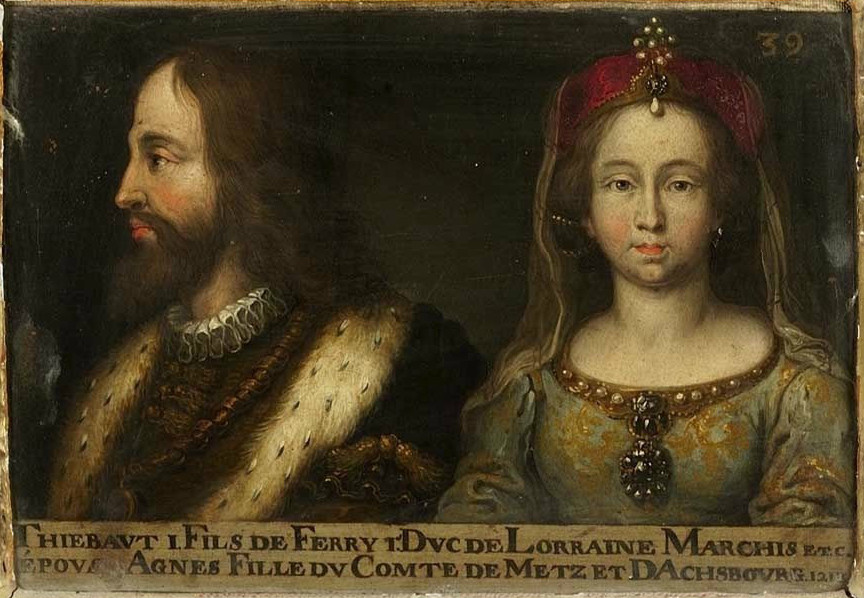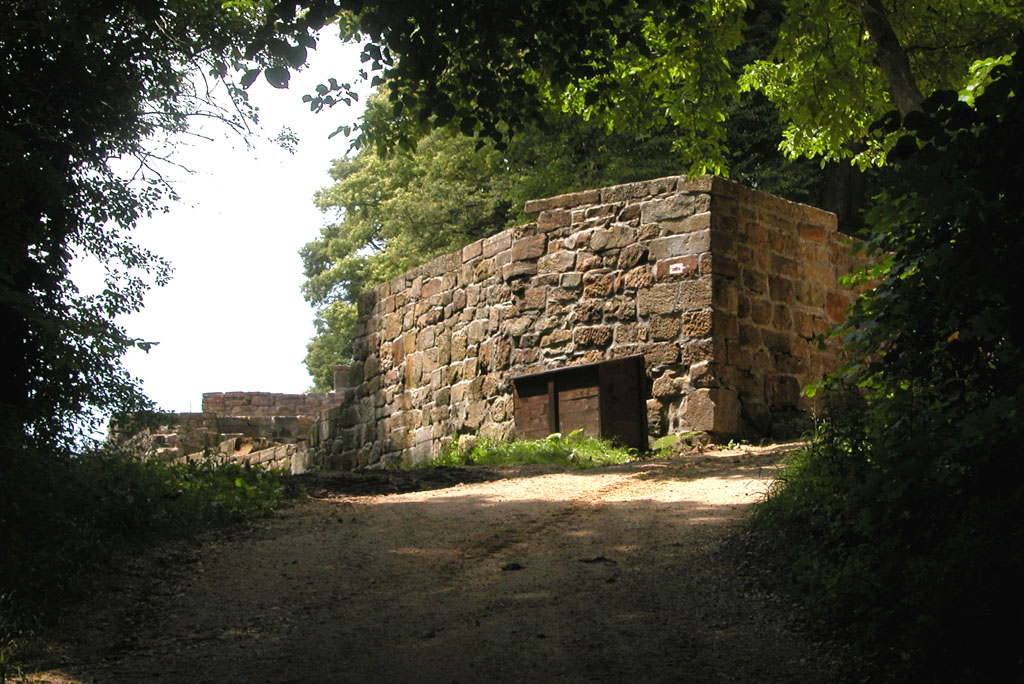|
Simon III, Count Of Saarbrücken
Simon III of Sarrebrück, Simon III von Saarbrücken (Saarbrücken- Leiningen) (c. 1180–1243) was the Count of Saarbrücken (de) from 1207 until his death, about 1240. Background Simon III was the eldest son of Simon II (de) (d.1207), Count of Saarbrücken (in office 1183–1207) and Count ''jure uxoris'' of Leiningen, and his wife Liutgard of Leiningen (d.a. 1239), who was daughter, sister, cousin or aunt of Emich III? (d. 1180/87 ''or'' c.1208), Count of Leiningen. When Liutgard's relative Friedrich (First cousin of Emich III) died c. 1215, she inherited the County of Leiningen. Simon II and his younger brother Heinrich (de) (d. 1228) got a share each of their father Simon's County of Saarbrücken, with Heinrich's part called County of Zweibrücken. Simon III's younger brother Friedrich III, "Frederick" (d. 1237), inherited the County of Leiningen, and founded "the younger House of Leiningen". His brother Heinrich (de) (d. 1234) was a Bishop of Worms. They belonged to ... [...More Info...] [...Related Items...] OR: [Wikipedia] [Google] [Baidu] |
County Of Nassau-Saarbrücken
The County of Saarbrücken was an Imperial State in the Upper Lorraine region, with its capital at Saarbrücken. From 1381 it belonged to the Walram branch of the Rhenish House of Nassau. County of Saarbrücken Around the year 1080 King Henry IV of Germany vested one Count Siegbert in the '' Saargau'' with the Carolingian ''Kaiserpfalz'' at Wadgassen on the Saar River and further possessions held by the Bishops of Metz in the Bliesgau as well as in the adjacent Alsace and Palatinate regions as a fiefdom. In the course of the fierce Investiture Controversy, the rise of the comital dynasty continued with the appointment of Siegbert's son Adalbert as Archbishop of Mainz in 1111, and in 1118 his elder brother Frederick was first mentioned with the title of a "Count of Saarbrücken". However, Frederick's son Simon I had to face the slighting of his Saarbrücken residence by the forces of Emperor Frederick Barbarossa in 1168. Upon his death about 1183, the county was divided int ... [...More Info...] [...Related Items...] OR: [Wikipedia] [Google] [Baidu] |
County Of Dagsburg
The County of Dagsburg with its capital Dagsburg (now Dabo in France) existed in Lorraine from 11th to 18th centuries when the area was still part of Holy Roman Empire. The ancestral castle in Dabo, the Dagsburg Castle in Lorraine, was acquired by the Etichonids shortly before the year 1000 through the marriage of Hugo VI, Count of Nordgau and Count of Eguisheim, with Heilwig of Dagsburg (d. 1046). The Etichonids built another Dagsburg Castle in Upper Alsace in 1150. The male members of the family used the title of Count of Dagsburg and Count of Eguisheim at this time; later they added the County of Metz. Among their possessions were numerous manors in the upper Saar area, Moha and Waleffe and High justice in the Diocese of Metz. The Etichonids died out in 1225. Gertrude of Dagsburg, the last member of the family, left behind eleven castles (including the Château de Guirbaden) and the vogtei over nine monasteries. The possessions around Dabo fell to the Hou ... [...More Info...] [...Related Items...] OR: [Wikipedia] [Google] [Baidu] |
Gertrude Of Baden
Gertrude of Baden (before 1160 – before 1225) was a Margravine of Baden by birth and by marriage a Countess of Dagsburg. She was a daughter of Margrave Hermann III of Baden and his wife, Bertha of Lorraine. Marriages and issue Gertrude married in 1180 to Albert II of Dagsburg (d. 1211). With him she had two sons, Henry and William, and a daughter, Gertrude (d. 1225). Both sons were killed in a tournament in Andain in 1202, so that the noble family of the Etichonids died out in the male line with Albert II in 1211. This left her daughter Gertrude as heiress of the county of Dagsburg. Her daughter Gertrude married in 1206 in her first marriage to Duke Theobald I of Lorraine. In 1217, she married her second husband, Count Theobald IV of Champagne, who was also King of Navarre This is a list of the kings and queens of Pamplona, later Navarre. Pamplona was the primary name of the kingdom until its union with Aragon (1076–1134). However, the territorial designatio ... [...More Info...] [...Related Items...] OR: [Wikipedia] [Google] [Baidu] |
Gertrude Of Dagsburg
Gertrude of Dagsburg (died 30 March 1225) was the reigning countess of Metz and Dagsburg (Dabo) between 1212 and 1225. She was duchess consort of Lorraine by marriage to Theobald. She was a trouvère. She was the daughter and heiress of Albert II, count of Metz and Dagsburg (Dabo). Life Gertrude was named after her mother, Gertrude of Baden, the daughter of Herman III, Margrave of Baden. The birth date of May 1205 (or as late as mid-1206) often assigned to her is questionable, as her mother was then 52 years old. at the Medieval Lands Project. A more plausible date is c. 1190. Gertrude succeeded her father as countess on his death in 1212, at which time she had already married Theobald, soon to be Duke of Lorraine (1213), according to the ''Vitæ Odiliæ''. Their betrothal occurred in September 1205, possibly when she was an infant. On her marriage her husband took over the administration of her inheritance, but he died in early 1220 without siring any children. In May 1220 ... [...More Info...] [...Related Items...] OR: [Wikipedia] [Google] [Baidu] |
Steven Runciman
Sir James Cochran Stevenson Runciman ( – ), known as Steven Runciman, was an English historian best known for his three-volume '' A History of the Crusades'' (1951–54). He was a strong admirer of the Byzantine Empire. His history's negative portrayal of crusaders and contrasting more favourable view of Byzantine and Muslim societies had a profound impact on the popular conception of the Crusades. Biography Born in Northumberland, he was the second son of Walter and Hilda Runciman. His parents were members of the Liberal Party and the first married couple to sit simultaneously in Parliament. His father was created Viscount Runciman of Doxford in 1937. His paternal grandfather, Walter Runciman, 1st Baron Runciman, was a shipping magnate. He was named after his maternal grandfather, James Cochran Stevenson, the MP for South Shields. Eton and Cambridge It is said that he was reading Latin and Greek by the age of five. In the course of his long life he would master an aston ... [...More Info...] [...Related Items...] OR: [Wikipedia] [Google] [Baidu] |
Damietta
Damietta ( arz, دمياط ' ; cop, ⲧⲁⲙⲓⲁϯ, Tamiati) is a port city and the capital of the Damietta Governorate in Egypt, a former bishopric and present multiple Catholic titular see. It is located at the Damietta branch, an eastern distributary of the Nile Delta, from the Mediterranean Sea, about north of Cairo. Damietta joined the UNESCO Global Network of Learning Cities. Etymology The modern name of the town comes from its Coptic name Tamiati ( cop, ⲧⲁⲙⲓⲁϯ} Late Coptic: ), which in turn most likely comes from Ancient Egyptian ("harbour, port"), although al-Maqrizi suggested a Syriac etymology. History Mentioned by the 6th-century geographer Stephanus Byzantius, it was called ''Tamiathis'' () in the Hellenistic period. Under Caliph Omar (579–644), the Arabs took the town and successfully resisted the attempts by the Byzantine Empire to recover it, especially in 739, 821, 921 and 968. The Abbasids used Alexandria, Damietta, Aden and Sir ... [...More Info...] [...Related Items...] OR: [Wikipedia] [Google] [Baidu] |
Fifth Crusade
The Fifth Crusade (1217–1221) was a campaign in a series of Crusades by Western Europeans to reacquire Jerusalem and the rest of the Holy Land by first conquering Egypt, ruled by the powerful Ayyubid sultanate, led by al-Adil, brother of Saladin. After the failure of the Fourth Crusade, Innocent III again called for a crusade, and began organizing Crusading armies led by Andrew II of Hungary and Leopold VI of Austria, soon to be joined by John of Brienne. An initial campaign in late 1217 in Syria was inconclusive, and Andrew departed. A German army led by cleric Oliver of Paderborn, and a mixed army of Dutch, Flemish and Frisian soldiers led by William I of Holland, then joined the Crusade in Acre, with a goal of first conquering Egypt, viewed as the key to Jerusalem. There, cardinal Pelagius Galvani arrived as papal legate and ''de facto'' leader of the Crusade, supported by John of Brienne and the masters of the Templars, Hospitallers and Teutonic Knights. Holy Ro ... [...More Info...] [...Related Items...] OR: [Wikipedia] [Google] [Baidu] |
Frederick II, Holy Roman Emperor
Frederick II ( German: ''Friedrich''; Italian: ''Federico''; Latin: ''Federicus''; 26 December 1194 – 13 December 1250) was King of Sicily from 1198, King of Germany from 1212, King of Italy and Holy Roman Emperor from 1220 and King of Jerusalem from 1225. He was the son of emperor Henry VI of the Hohenstaufen dynasty and Queen Constance of Sicily of the Hauteville dynasty. His political and cultural ambitions were enormous as he ruled a vast area, beginning with Sicily and stretching through Italy all the way north to Germany. As the Crusades progressed, he acquired control of Jerusalem and styled himself its king. However, the Papacy became his enemy, and it eventually prevailed. Viewing himself as a direct successor to the Roman emperors of antiquity, he was Emperor of the Romans from his papal coronation in 1220 until his death; he was also a claimant to the title of King of the Romans from 1212 and unopposed holder of that monarchy from 1215. As such, he was K ... [...More Info...] [...Related Items...] OR: [Wikipedia] [Google] [Baidu] |
King Of Germany
This is a list of monarchs who ruled over East Francia, and the Kingdom of Germany (''Regnum Teutonicum''), from the division of the Frankish Empire in 843 and the collapse of the Holy Roman Empire in 1806 until the collapse of the German Empire in 1918. Note on titles #The Kingdom of Germany started out as the eastern section of the Frankish kingdom, which was split by the Treaty of Verdun in 843. The rulers of the eastern area thus called themselves ''rex'' ''Francorum'' ("king of the Franks"), ''rex Francorum orientalium'' ("king of the East Franks"), and later just ''rex''. A reference to the "Germans", indicating the emergence of a German nation of some sort, did not appear until the eleventh century, when the pope referred to his enemy Henry IV as ''rex teutonicorum'', king of the Germans, in order to brand him as a foreigner. The kings reacted by consistently using the title ''rex Romanorum'', king of the Romans, to emphasize their universal rule even before becoming ... [...More Info...] [...Related Items...] OR: [Wikipedia] [Google] [Baidu] |
Otto IV, Holy Roman Emperor
Otto IV (1175 – 19 May 1218) was the Holy Roman Emperor from 1209 until his death in 1218. Otto spent most of his early life in England and France. He was a follower of his uncle Richard the Lionheart, who made him Count of Poitou in 1196. With Richard's support, he was elected King of Germany by one faction in a disputed election in 1198, sparking ten years of civil war. The death of his rival, Philip of Swabia, in 1208 left him sole king of Germany. In 1209, Otto marched to Italy to be crowned emperor by Pope Innocent III. In 1210, he sought to unite the Kingdom of Sicily with the Empire, breaking with Innocent, who excommunicated him. He allied with England against France and took part in the alliance's defeat at Bouvines in 1214. He was abandoned by most of his supporters in 1215 and lived the rest of his life in retirement on his estates near Brunswick. He was the only German king of the Welf dynasty. Career Early life Otto was the third son of Henry the L ... [...More Info...] [...Related Items...] OR: [Wikipedia] [Google] [Baidu] |
Hohenstaufen
The Hohenstaufen dynasty (, , ), also known as the Staufer, was a noble family of unclear origin that rose to rule the Duchy of Swabia from 1079, and to royal rule in the Holy Roman Empire during the Middle Ages from 1138 until 1254. The dynasty's most prominent rulers – Frederick I (1155), Henry VI (1191) and Frederick II (1220) – ascended the imperial throne and also reigned over Italy and Burgundy. The non-contemporary name of 'Hohenstaufen' is derived from the family's Hohenstaufen Castle on the Hohenstaufen mountain at the northern fringes of the Swabian Jura, near the town of Göppingen. Under Hohenstaufen rule, the Holy Roman Empire reached its greatest territorial extent from 1155 to 1268. Name The name Hohenstaufen was first used in the 14th century to distinguish the 'high' (''hohen'') conical hill named Staufen in the Swabian Jura (in the district of Göppingen) from the village of the same name in the valley below. The new name was only applied to the ... [...More Info...] [...Related Items...] OR: [Wikipedia] [Google] [Baidu] |






